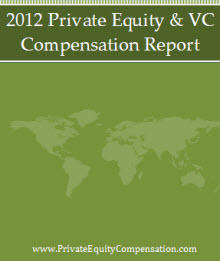With the recent bankruptcy filing of Solyndra, venture capitalists and limited partners must be asking themselves whether any involvement by the Department of Energy (or any government agency for that matter) in funding a venture amounts to a “kiss of death”. There are many facets to the Solyndra story which have yet to unfurl into any clear answers. Perhaps the FBI and Congressional investigations will shed more light on how venture capitalists (including U.S. taxpayers), were so easily led off of a cliff. At the very least, the “Solyndra effect” will give venture capital firms pause as they review their clean-tech portfolios. And, it will most likely raise the issue of whether government involvement in a venture is a help or a hindrance.
The most obvious question the Solyndra case raises is whether any clear-minded investor should ever wade into a venture deal that is backed so heavily by the U.S. government. Setting aside, for the moment, the contention that the government really has no business acting as a venture capitalist with taxpayer money, Solyndra investors must now be asking themselves why they would ever invest in a deal in which the government can pull the levers.
backed so heavily by the U.S. government. Setting aside, for the moment, the contention that the government really has no business acting as a venture capitalist with taxpayer money, Solyndra investors must now be asking themselves why they would ever invest in a deal in which the government can pull the levers.
Certainly, President Obama’s loan guarantee, courtesy of the taxpayer’s Stimulus I dollars, was viewed as an insurance policy by existing and prospective investors as it encouraged additional funding rounds. But, when the DOE stepped in to “encourage” even more funding by existing investors in the face of rapidly declining valuations, it must have sounded some alarms. When backers are asked to step outside the bounds of established funding protocol to satisfy the DOE so it can justify its involvement, they effectively cede control to government bureaucrats whose interests aren’t necessarily aligned with the investors. That key backers were forced to subordinate their positions by converting their preferred equity into unsecured common stock in order to accommodate the DOE is unprecedented.
The impending investigations may shed some light on what the DOE knew about Solyndra’s deteriorating condition and when they knew it. It is also likely to reveal what reasonable-minds have long surmised; that politically motivated investment decisions made by the government rarely lead to success. The administration is defending its position in the case of Solyndra by point out that solar energy development in the U.S. is disadvantaged due to China’s dumping solar panel products and technology on the world market drastically undercutting prices. But, the other lesson gone ignored by investors is that any product or technology that requires government subsidies to stay afloat rarely becomes profitable.
Clean tech venture capitalists will have several other projects to watch and wonder if free market entanglement with government sponsorship offers any real prospect of success. Other DOE projects, such as Fisker, an electric car manufacturer that received a half billion dollars in loan guarantees, and Brightsource, a solar tech firm which received over a billion dollars in loan guarantees, may have a brighter future than Solyndra, but you can be sure that their venture capital backers are sleeping with one eye open.

